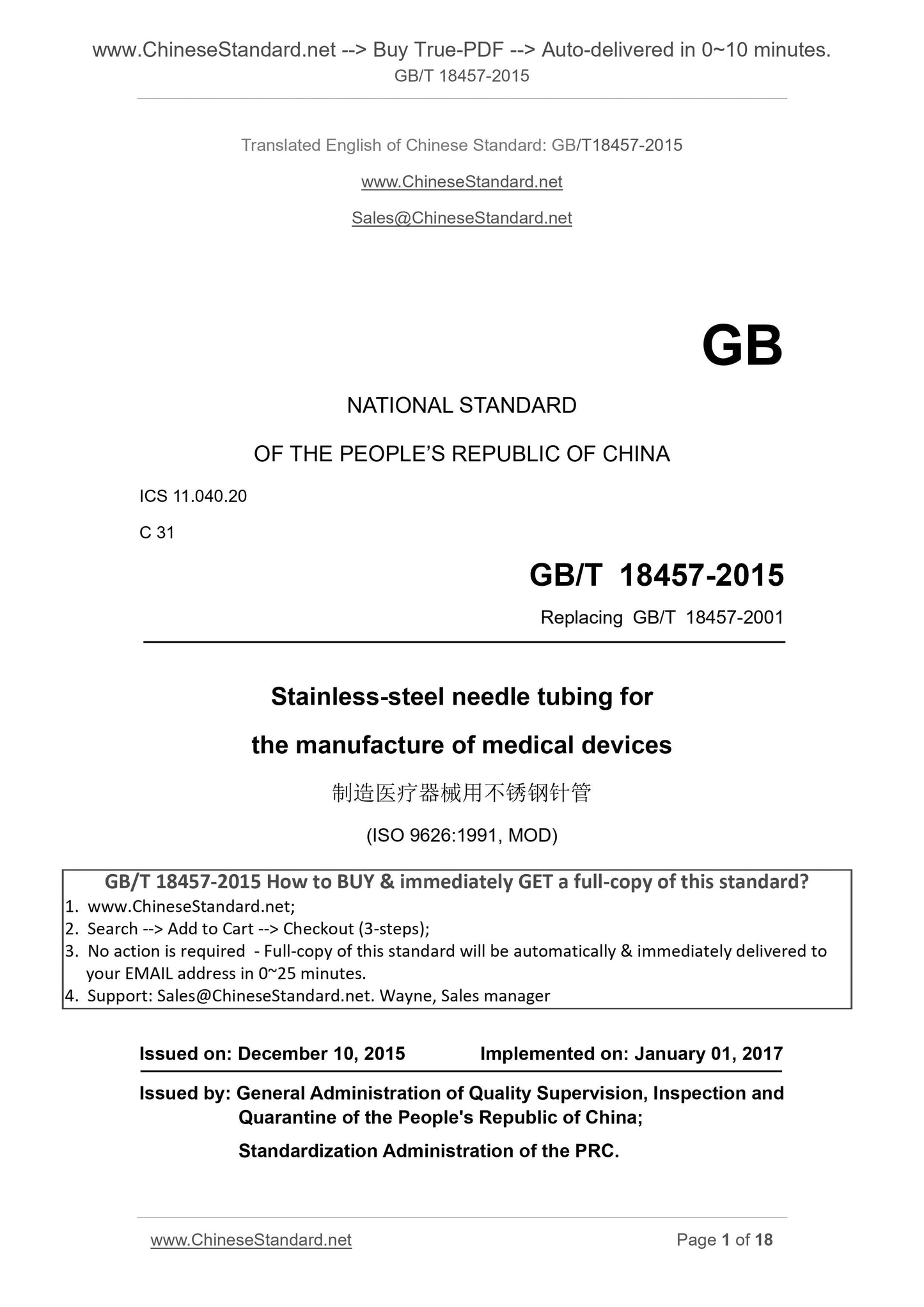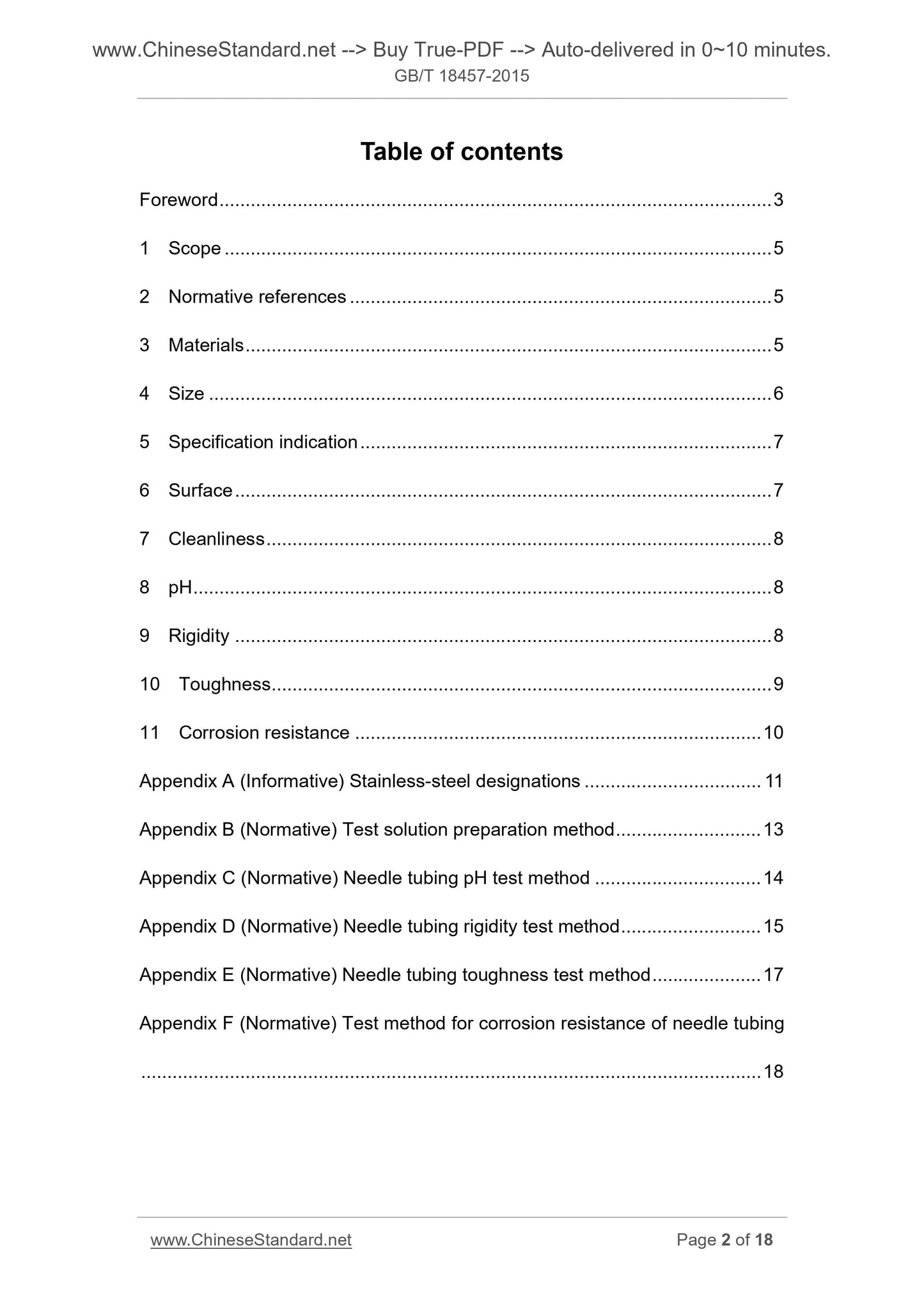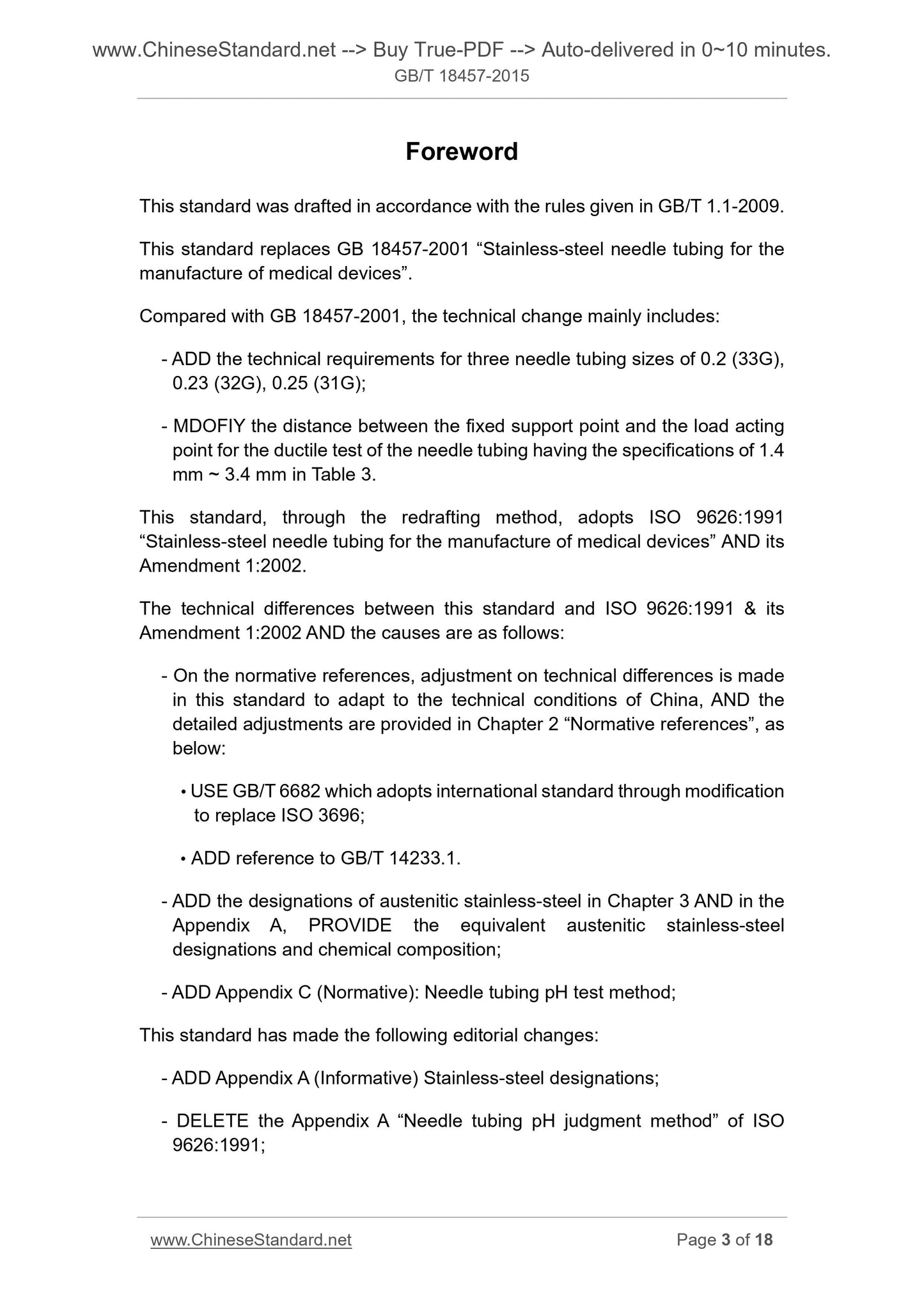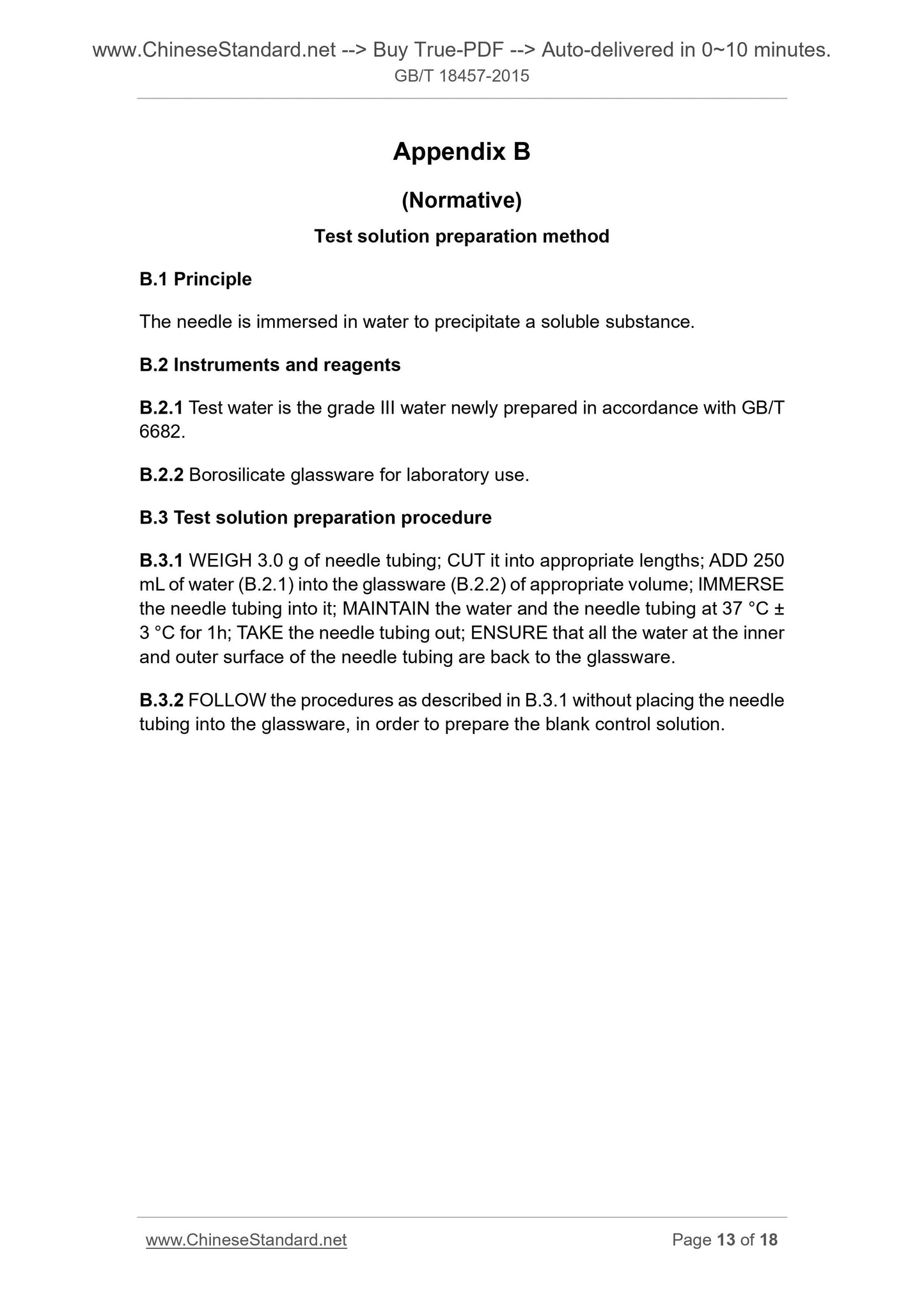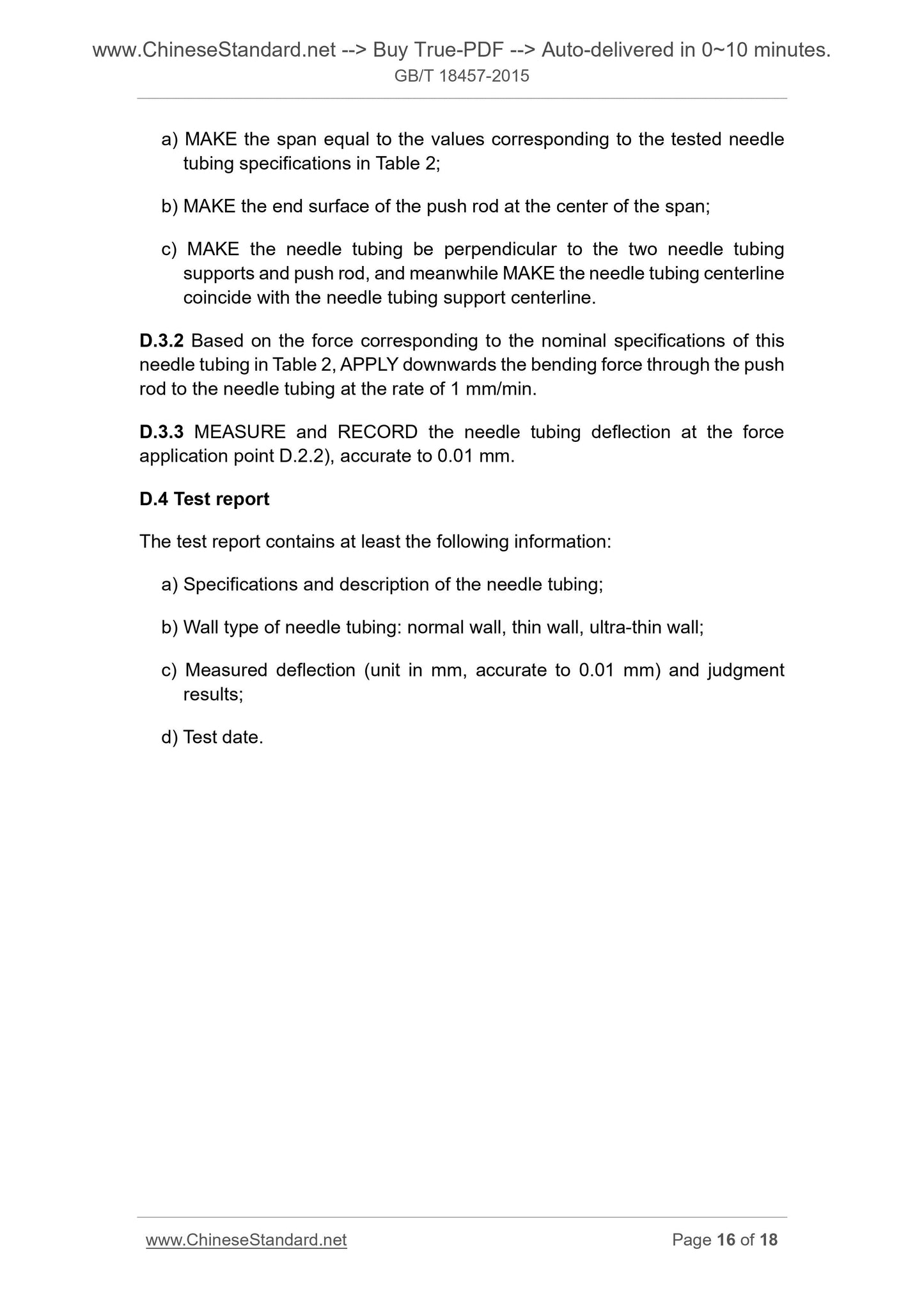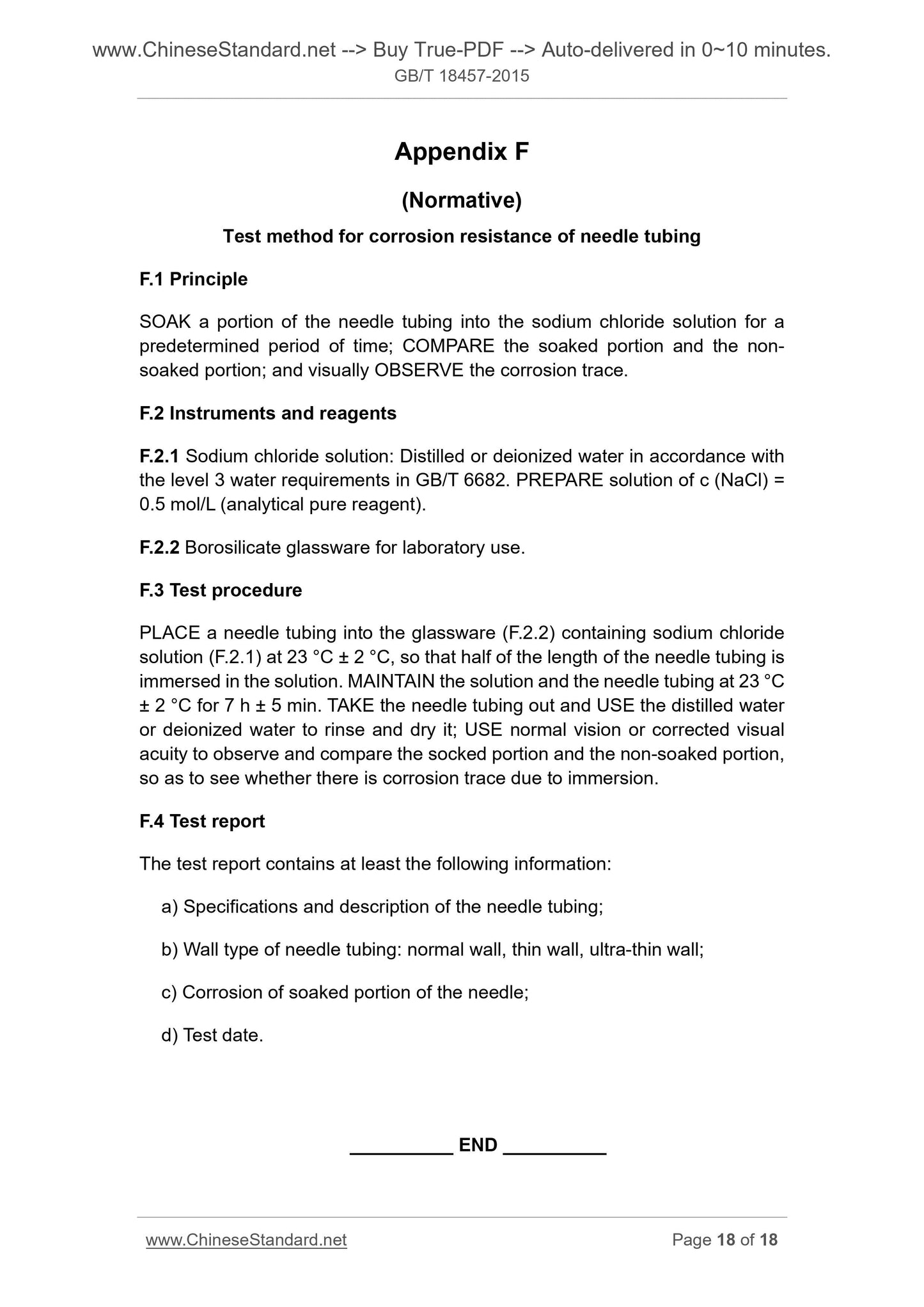1
/
of
7
PayPal, credit cards. Download editable-PDF and invoice in 1 second!
GB/T 18457-2015 English PDF (GB/T18457-2015)
GB/T 18457-2015 English PDF (GB/T18457-2015)
Regular price
$125.00
Regular price
Sale price
$125.00
Unit price
/
per
Shipping calculated at checkout.
Couldn't load pickup availability
GB/T 18457-2015: Stainless steel needle tubing for the manufacture of medical devices
Delivery: 9 seconds. Download (and Email) true-PDF + Invoice.Get Quotation: Click GB/T 18457-2015 (Self-service in 1-minute)
Newer / historical versions: GB/T 18457-2015
Preview True-PDF
Scope
This standard specifies the size, surface and mechanical properties of the tubehaving normal wall and thin wall of nominal specification 0.2 mm ~ 3.4 mm AND
the ultra-thin wall of specification 0.6 mm ~ 2.1 mm.
This standard applies to the rigid straight stainless-steel needle tubing used for
human body skin, subcutaneous, muscle and vein injection (hereinafter referred
to as the needle tubing).
This standard does not apply to easy-to-bend stainless-steel needle tubing,
because its mechanical properties are different from the rigid stainless-steel
needle tube as specified in this standard; however, it is recommended for the
manufacturer and purchaser of the easy-to-bend stainless-steel needle tubing
to select the sizes as specified in this standard.
Basic Data
| Standard ID | GB/T 18457-2015 (GB/T18457-2015) |
| Description (Translated English) | Stainless steel needle tubing for the manufacture of medical devices |
| Sector / Industry | National Standard (Recommended) |
| Classification of Chinese Standard | C31 |
| Classification of International Standard | 11.040.20 |
| Word Count Estimation | 19,139 |
| Date of Issue | 2015-12-10 |
| Date of Implementation | 2017-01-01 |
| Older Standard (superseded by this standard) | GB 18457-2001 |
| Quoted Standard | GB/T 6682; GB/T 14233.1-2008; ISO/TS 15510-2003 |
| Regulation (derived from) | National Standard Announcement 2015 No.38 |
| Issuing agency(ies) | General Administration of Quality Supervision, Inspection and Quarantine of the People's Republic of China, Standardization Administration of the People's Republic of China |
| Summary | This standard specifies the size, surface and mechanical properties of normal wall, thin wall and ultra thin wall tube of 0.6mm ~ 2.1mm in metric size of 0.2mm ~ 3.4mm. This standard applies to the human skin, subcutaneous, muscle and intravenous injection needle and other medical equipment with hard straight stainless steel needle (hereinafter referred to as needle). This standard does not apply to pliable stainless steel syringes, which are different from the hard straight stainless steel syringes specified in this standard, but encourage the manufacturer and purchaser of the flexible needle to use the dimensions specified in this standard. |
Share
